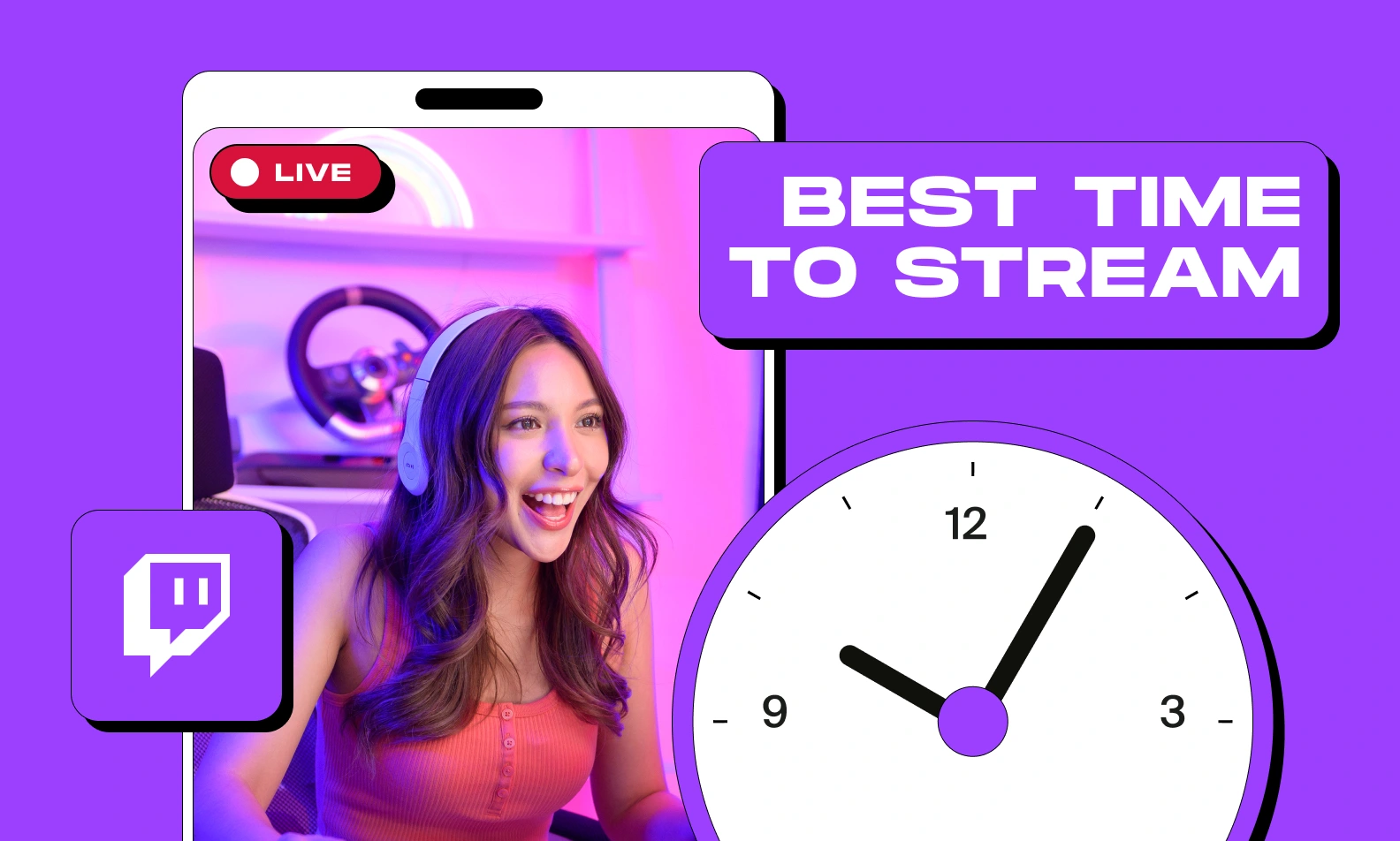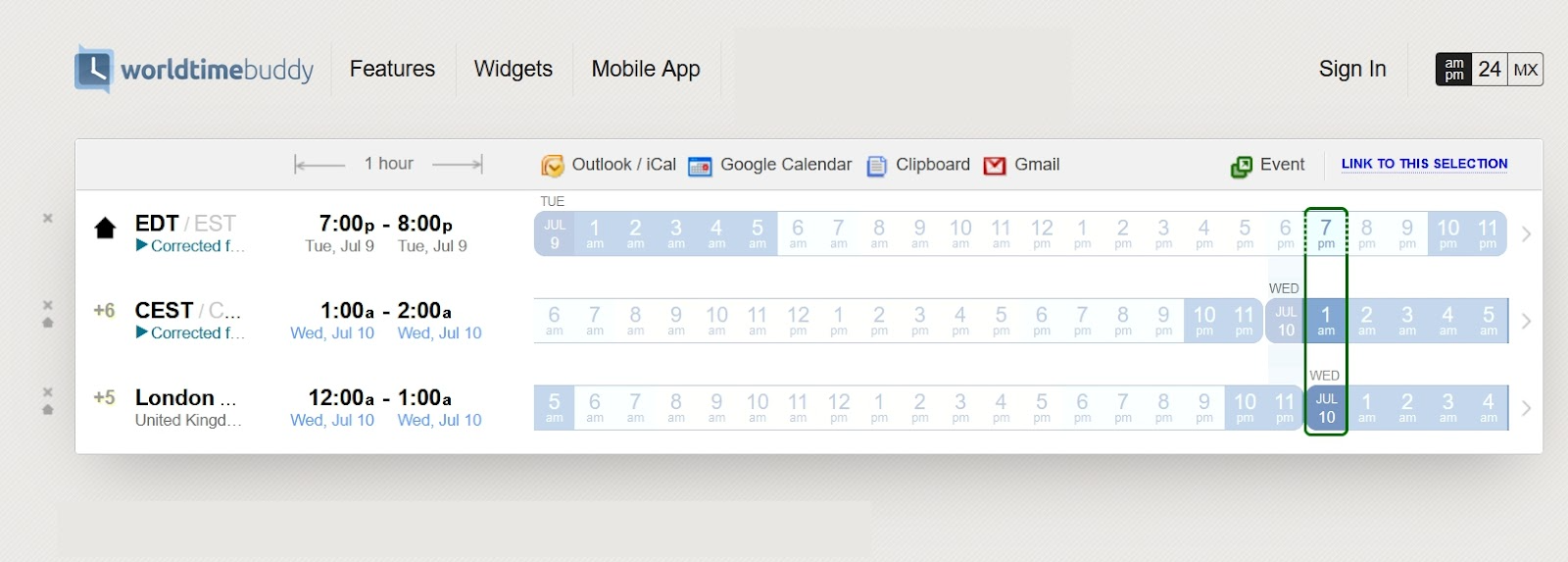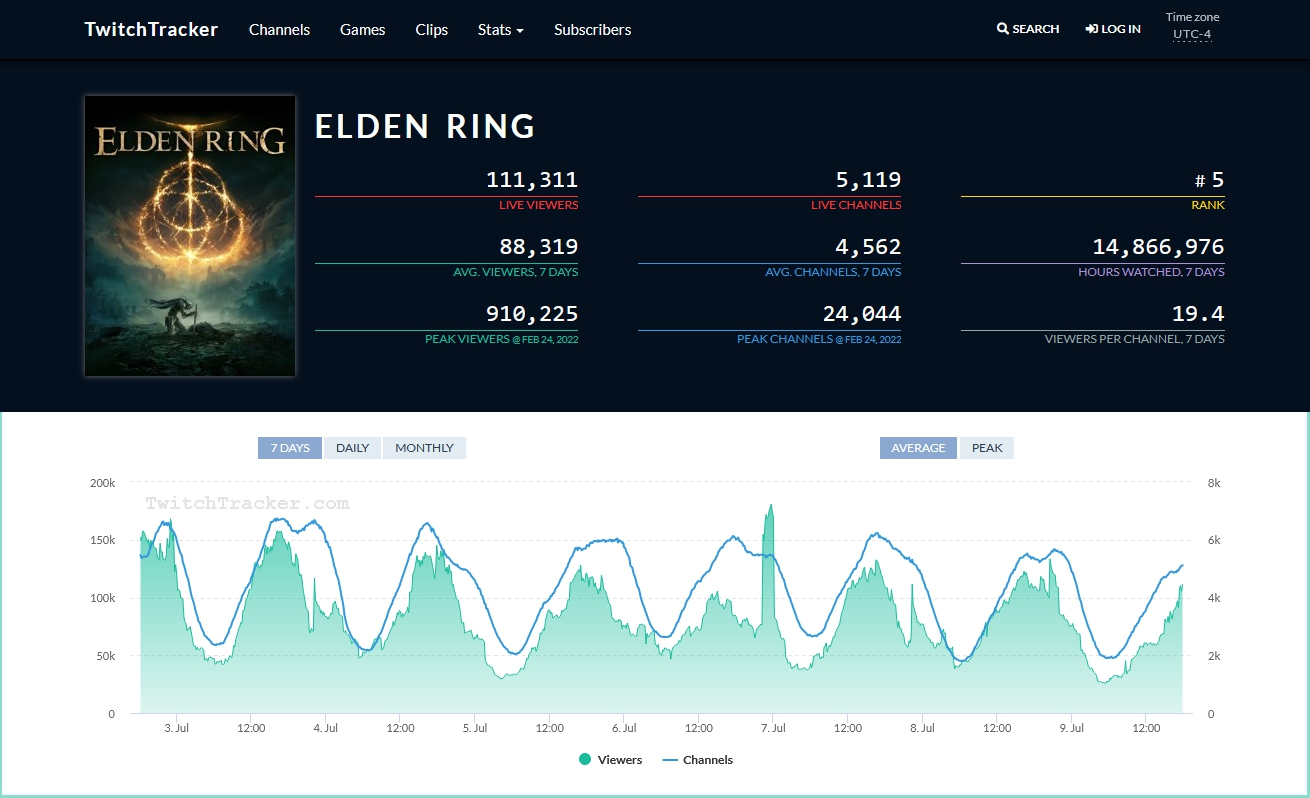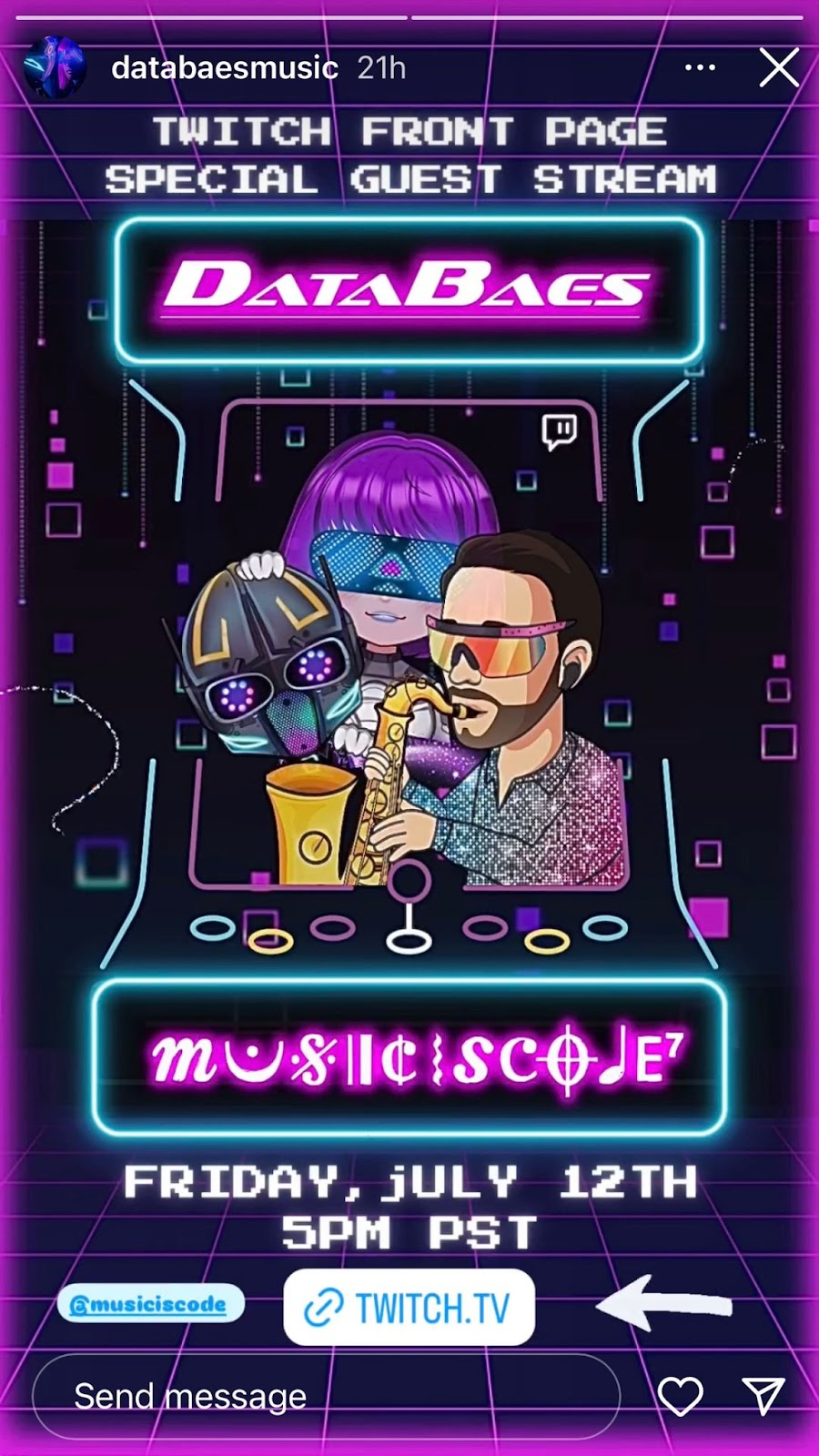Choosing the Best Times to Stream on Twitch

In the world of Twitch streaming, success often hinges not only on captivating content and an engaged viewing community, but also on strategic timing. Determining the best times to go live and stream on Twitch can significantly impact your channel's growth and viewership - but what is the best time to stream? Considering that there are over 7 million active streamers on Twitch vying for a daily average of 2.5 million concurrent viewers, there's unfortunately no easy answer to that question. That said, don't leave yet - because what we can tell you is how to optimize your streaming schedule for maximum impact!
What is the Best Time to Stream on Twitch?
Twitch's "golden hours" - those magical times when lots of people find your stream, engagement peaks, chat is cruising along, and you're heading for the top section of your category - can seem like an unsolvable mystery. So how do you roll for those elusive golden hours so you can apply them to your streaming schedule? There's still no exact answer and may never be, as the golden hours will always be different for each individual Twitch streamer - but you can skew the dice in your favor by working to understand your audience's behavior and stats, and adjusting your streaming schedule accordingly. This attention to detail can make a big difference in how your Twitch channel grows.
Many streamers fall into the trap of believing that there's a universal best time to stream on Twitch, and that's how the golden hours are found. In reality, the best times for streaming on Twitch vary based on a wide range of factors, including what you're streaming, who you're trying to reach, and where they're located. Viewer demographics and time zones play a crucial role in identifying when your content will resonate most; for instance, evenings might be prime time for North American viewers, while mornings could attract European audiences. But there are even more factors to consider.
How to Find Your Best Times to Stream on Twitch
Investing some time into gathering stats about your streaming category and your audience is a smart move; being more informed can definitely help you get a head start on your competition when it comes to finding the best times to go live. Consider these factors:
Time Zones
Know where the bulk of your audience is geographically concentrated, and schedule streams when they're most likely to be online. For instance, a typical evening stream time start in the U.S. might be 7pm ET, while a European-based evening stream start time, from an American streamer’s perspective, wouldn't start until 1am ET.

Category or Game
Different games and categories have their own peak times. Research when your favorite game attracts the most viewers, and then look for a balance between the peak time for that game and the amount of streamers actively streaming said game.
Audience Engagement
Analyze your Twitch analytics (in your Dashboard) to identify when your audience has been most active during your past streams. This data will help you schedule the best times for your streams on Twitch, so you can maximize viewer engagement.
How to Create a Successful Twitch Streaming Schedule
Consistency is another crucial component of growing your Twitch channel. Not only does a consistent schedule help keep you streaming regularly, it also gives your viewers a predictable way to find you, and to share your stream with others ("Yeah, he's great, he always streams starting at 10pm on Fridays!")
Having a schedule also allows your viewers to make a habit of watching you, which builds up your audience over time as you become part of their weekly routine; it might also make viewers more likely to subscribe to your Twitch channel, as they'll feel more assured that they'll be getting regular content for the price of their sub. Here are some things to consider when building your Twitch streaming schedule:
Understand Your Audience
Tailor your streaming times based on your audience's preferences and availability. This will be a factor that you'll discover over time, as you can, again, dig into your Twitch analytics (in your Dashboard) to see how the patterns unfold of when you bring in the most viewers.
Use Twitch Statistics Tools
Do some research on sites like TwitchTracker or SullyGnome to look into the stats for the category or game that you want to stream on Twitch. What you're looking for is a balance between peak times for that category (people actively watching x game) and streamers streaming that category (less streamers streaming is better, as it gives you a better chance to be seen.)

Test Out Different Times
Experiment with streaming at different times to appeal to different segments of your audience. Depending on what you're streaming, your content may appeal more to daytime viewers or people at work (cozy games, chill live music, chatting), or you may find that most of your viewers prefer to watch you in the evenings (FPS games, raucous party games.)
PRO TIP: Keep your own preferences in mind, too; if you have zero energy in the mornings, then (regardless of stats), that might not be a good time for you to stream as you won't be presenting your best self.
Stay Flexible
Be willing to adjust your schedule based on viewer feedback and changing trends. If you've scheduled all evening streams with a few afternoon streams thrown in, but you find that your audiences are larger and more engaged during your afternoon streams, then that will help you make your scheduling decisions.
Engage Globally
Consider time zone differences to attract viewers from around the world. Some streamers keep a regular schedule in consideration of their own home time zone, and then add in a couple of additional streams to accommodate viewers from other countries, which helps both grow and diversify their audience.
Community Time!
There aren't many successful streamers who can simply stream on Twitch, shut off the mic, and not "see" their viewers again at all until the next stream. Interacting with your audience between streams helps grow your community, and can also be an excellent feedback source for you in regards to your scheduling; for instance, if you host a community Discord for your streams, you could post polls or ask questions about which days/times your viewers prefer watching you stream. Accommodating their viewing needs can also help increase fan loyalty and keep your audiences consistent.
How to Promote Your Twitch Streams in 3 Steps
Social media can be a game changer for promoting your Twitch streams! Making yourself and your streams more visible can both remind your regular viewers that you'll be streaming on Twitch, and can also intrigue brand new viewers to come check out your content. Plus, the more viewers you have, the more data you can collect on those optimum streaming times! Here are 3 steps to social media stream promotion:
1. Repurpose Existing Content
Turn highlights or promo material from your streams into short clips or mini-posters to share on platforms like Instagram, TikTok, or Twitter (X). If you're streaming on Twitch on a regular schedule, this should be fairly easy to do, as you'll constantly have content to pull clips from. This gives potential viewers a peek at your content and encourages them to tune in for more, and is a great way to make your existing content do some extra work for you!

2. Connect with Your Niche
Engage authentically with communities, forums, and influencers within your niche. Having your own Discord, as mentioned above, is a great way to grow your Twitch channel and your own community; but socializing and building genuine relationships with like-minded individuals and fellow streamers can also encourage their followers to check out your Twitch channel, helping to further grow your regular audience.
3. Cross-Promote Your Streams
Share your Twitch streaming schedule and highlights across all your social media channels. Use eye-catching visuals and engaging captions to capture attention and remind your followers to join your live streams. Stream announcements shortly before you're going to go live on Twitch is another good way to nudge viewers to come watch you, and can help visually reinforce the consistency and reliability of your streaming schedule.
It's Time to Level Up Your Streams with Fourthwall
Twitch streamers! Are you ready to fine-tune your streaming schedule and take your Twitch channel to the next level? Fourthwall provides a user-friendly platform especially for content creators like you, so you can establish the perfect online base to send your growing audience! With Fourthwall, you can design your own home website and seamlessly monetize your content, from offering exclusive membership perks and accepting tips, to designing and selling cool custom merch.
Get started today on Fourthwall to launch your website, design your products, link to your Twitch channel, share your socials, and gather together your community of fans and supporters, all in one convenient place!
















